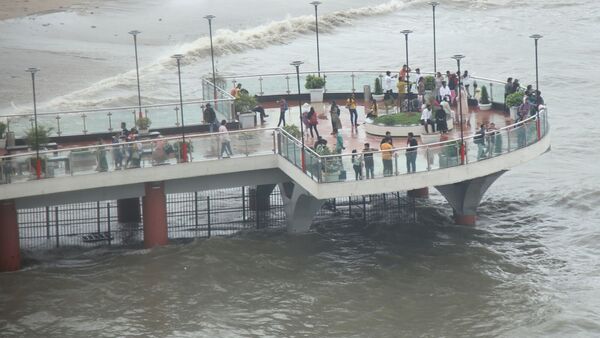
Introduction: Mumbai’s Culture and History Explore
Mumbai’s Culture and History Explore, previously known as Bombay, is one of the most populous and biggest cities in Maharashtra. Also, the biggest metropolis in this state, Mumbai, is popular for entertainment and financial capital. It is the largest city in India and is fondly called the City of Dreams. Mumbai is a place filled with dreamers and people who work hard day and night to achieve their dreams, Mumbai’s culture and history are explored.
From struggling actors, laborers, and Bollywood stars to gangsters, Mumbai has a lot. There is a lot that can be written about and talked about! Mumbai is also home to one of the biggest slum areas as well as the richest, so it is only fair to describe Mumbai as a city for all.
The majority spoken language is Hindi, but this city has welcomed people from all faiths and religions warmly. If you want to know and experience diversity, visit Mumbai. The best time to visit Mumbai is from October to March when the climate is pleasant and conducive.
Cultural Vibrancy of Mumbai:
Mumbai’s cultural kaleidoscope is a reflection of its diverse populace and the amalgamation of traditions from across India. The city is a melting pot of languages, religions, and customs, creating a unique mosaic that defines its cultural landscape.
Language and Literature:
Mumbai, being a cosmopolitan hub, hosts a multitude of languages. Marathi, the official language of Maharashtra, prevails, but Hindi, English, Gujarati, and several South Indian languages also find their place in the linguistic melange. The literary scene is equally diverse, with Mumbai nurturing renowned authors like Salman Rushdie and Arundhati Roy, whose works traverse the intricate layers of the city’s cultural fabric.
Art and Performing Arts:
The city’s artistic vibrancy is showcased through its thriving art galleries, theaters, and street performances. Kala Ghoda, a prominent art district, is adorned with galleries featuring contemporary and traditional Indian art. Mumbai’s theaters, such as Prithvi Theatre and NCPA, are the epicenters of dramatic performances, reflecting the city’s deep connection with the performing arts.
Festivals and celebrations:
Mumbai transforms into a riot of colors and festivities during cultural celebrations. Ganesh Chaturthi, with its grand processions and elaborate decorations, encapsulates the city’s fervor. The festival is not just a religious event but a cultural phenomenon that unites Mumbaikars in joyous celebration.
Historical Roots:
Mumbai’s history is a captivating journey that unfolds through the centuries, revealing the city’s evolution from a cluster of islands to a thriving metropolis. Mumbai emerged as a significant trading town during the 18th century. From 1782 onwards, the city was reshaped with large-scale civil engineering projects aimed at merging all seven islands of Bombay into a single amalgamated mass by way of a causeway called the Hornby Vellard, which was completed by 1784.
Colonial Legacy:
The colonial era left an indelible mark on Mumbai’s landscape. The Gateway of India, an iconic monument, stands as a silent sentinel to British colonial rule. Built to commemorate the visit of King George V and Queen Mary in 1911, the Gateway became the ceremonial entrance to India, symbolizing the city’s historical connection with the British Empire.
Architectural Marvels:
Mumbai’s architecture narrates tales of its colonial past and indigenous influences. The Chhatrapati Shivaji Maharaj Terminus, a UNESCO World Heritage Site, is an architectural marvel that seamlessly blends Victorian, Gothic, and Indian styles. Its towering arches and ornate carvings reflect the city’s historical grandeur.
Struggles and Independence:
Mumbai played a pivotal role in India’s struggle for independence. The August Kranti Maidan witnessed the clarion call for the Quit India Movement in 1942, echoing the fervent spirit of freedom that coursed through the city’s veins. The struggles of leaders like Mahatma Gandhi and Lokmanya Tilak resonate in the historical echoes of Mumbai.
International Fame:
Mumbai’s fame extends far beyond its borders, making it a globally recognized city that encapsulates the essence of modern India.
Bollywood and Entertainment:
The city’s global fame is inseparable from its thriving film industry, Bollywood. Mumbai serves as the nerve center of the Indian film fraternity, producing a staggering number of films annually. The glitz and glamour of Bollywood not only contribute to Mumbai’s fame but also project India’s cultural richness worldwide.
Economic Powerhouse:
Mumbai’s financial prowess is another facet of its international acclaim. Home to the Bombay Stock Exchange and the Reserve Bank of India, the city is the economic heartbeat of the country. Its towering skyscrapers and bustling business districts symbolize India’s economic aspirations on the global stage.
Gateway to Opportunities:
A walk around the streets of Colaba or near Churchgate is enough for you to get a glimpse of the colonial-era buildings. Some of the many monuments that give Mumbai a British look and feel are Chattrapati Shivaji Terminus, Flora Fountain, High Court, Taj Hotel, Gateway of India, and also the Asiatic Society
Conclusion: Mumbai’s Culture and History
Mumbai’s culture and history explore and emerge not just as a city but as a living, breathing entity that encapsulates the spirit of India. Its cultural vibrancy, rooted in linguistic diversity, artistic expressions, and vibrant celebrations, defines it as a microcosm of the nation. The historical journey from colonial influences to the struggles for independence has left an indomitable imprint on the city’s identity. Mumbai’s international fame, propelled by the glitz of Bollywood and the economic prowess of its financial sector, positions it as a global powerhouse. As the city continues to evolve, it remains a testament to the resilience, diversity, and ambition that characterize modern India. Mumbai is not merely a destination; it is a journey through time, culture, and fame, inviting the world to explore its vibrant tapestry that weaves together the threads of the past, present, and future.






